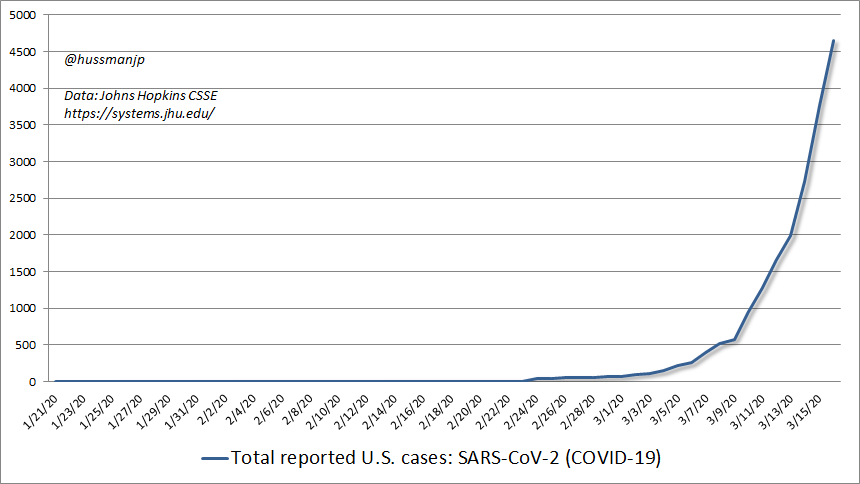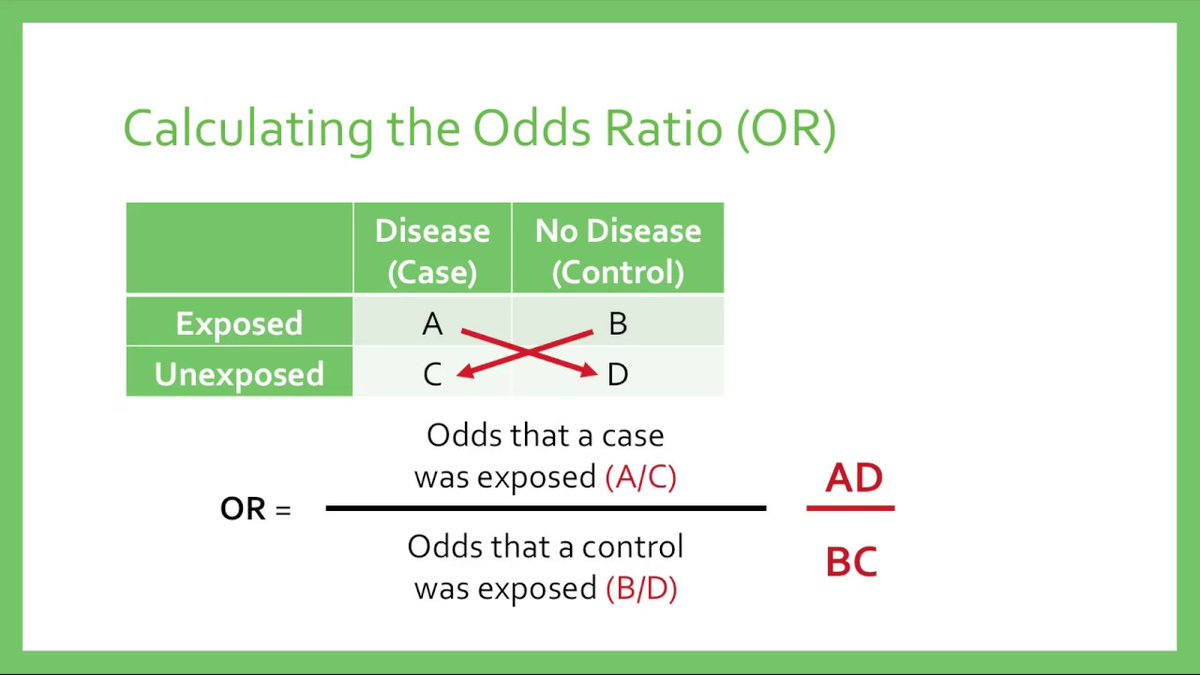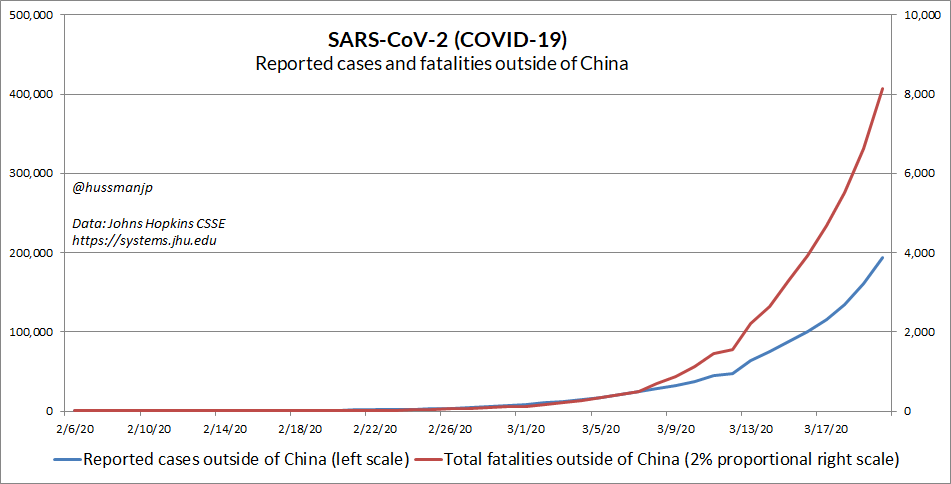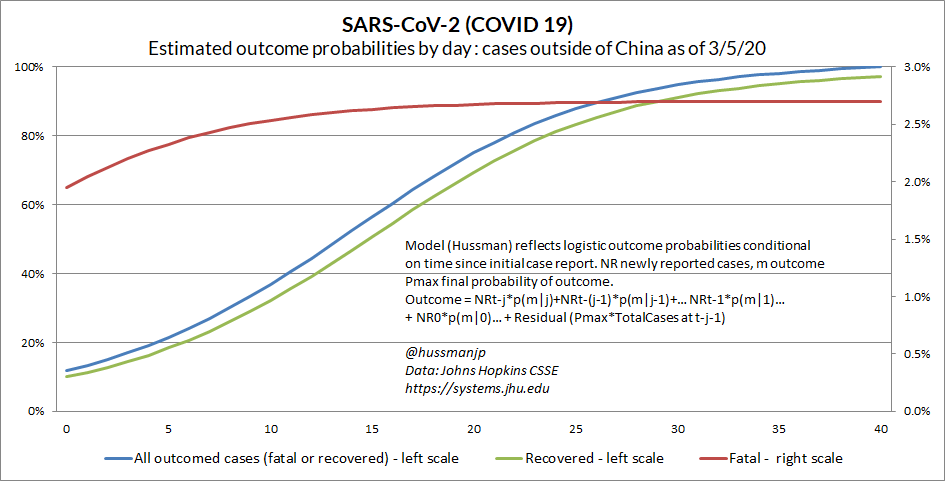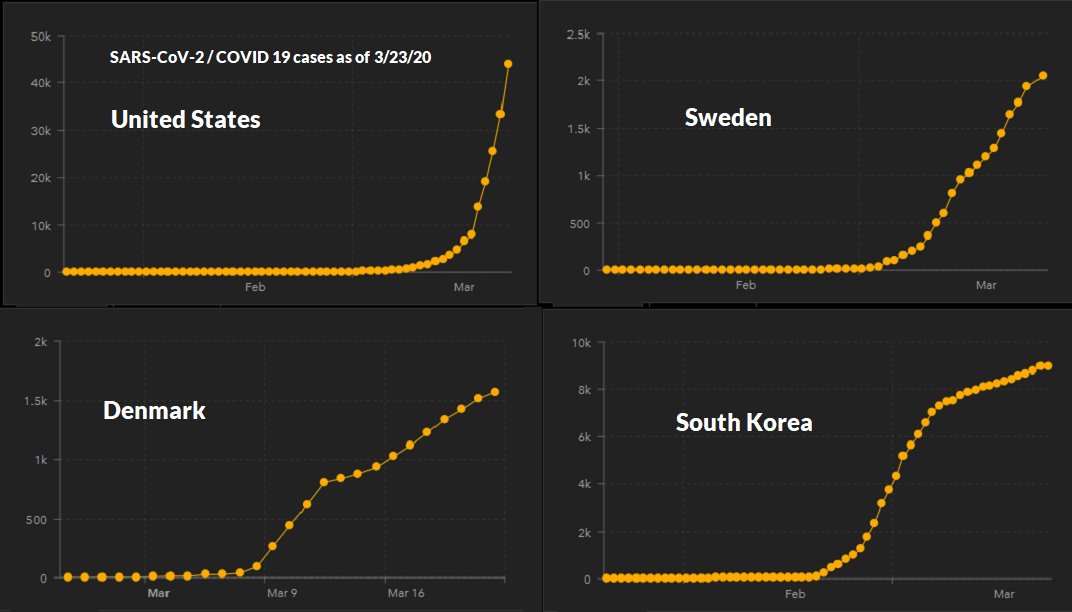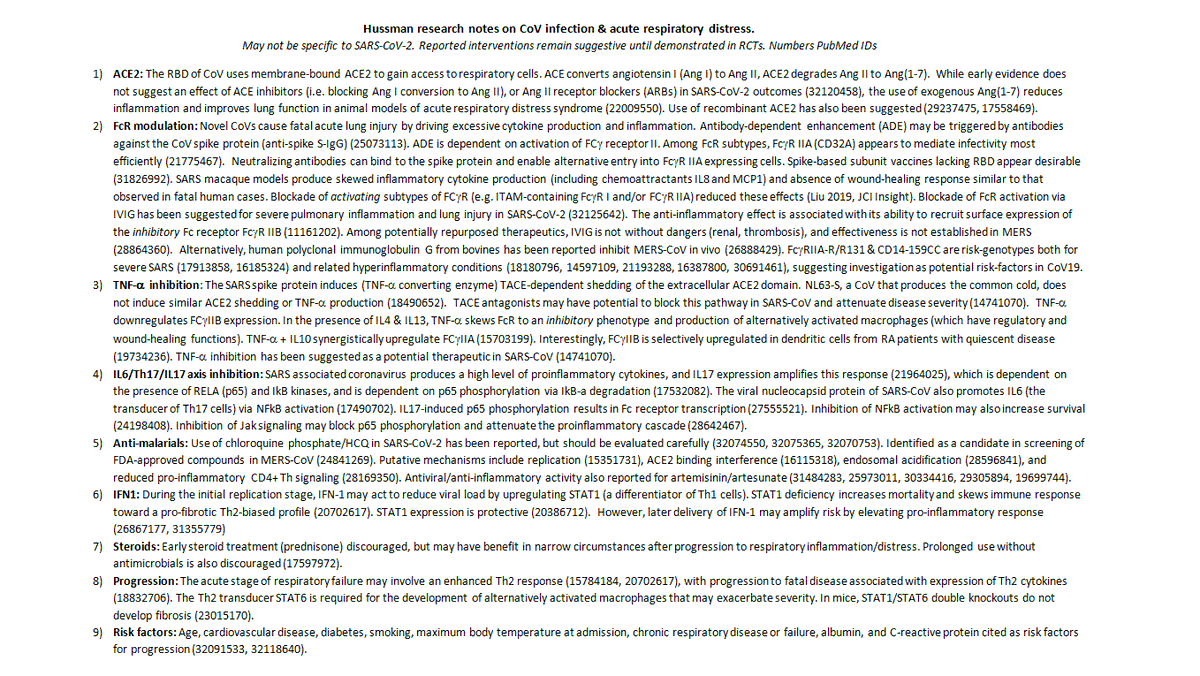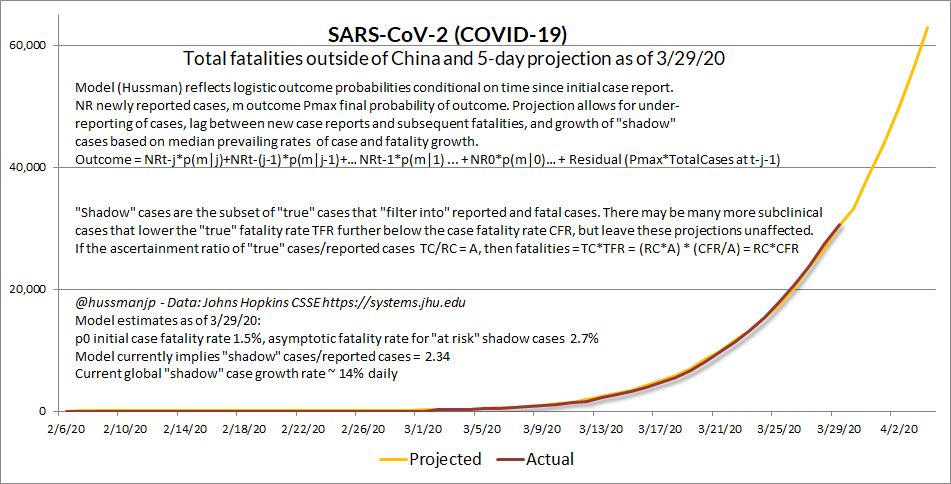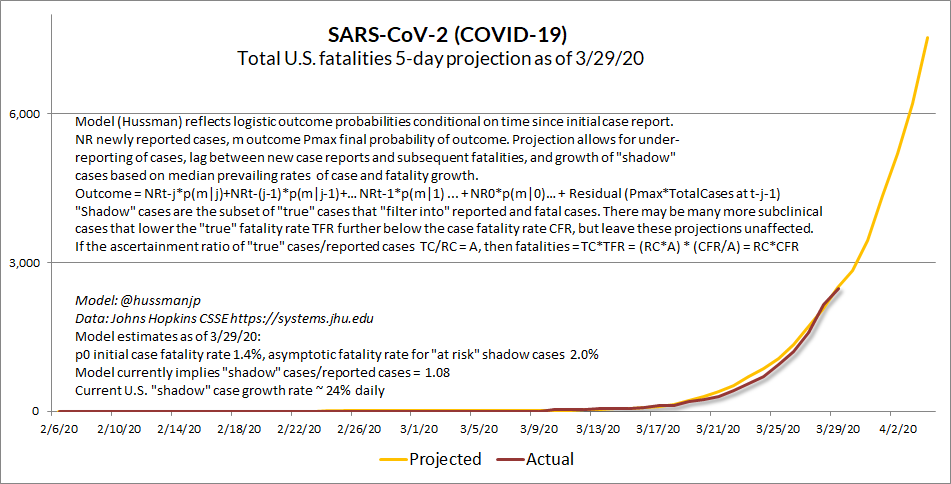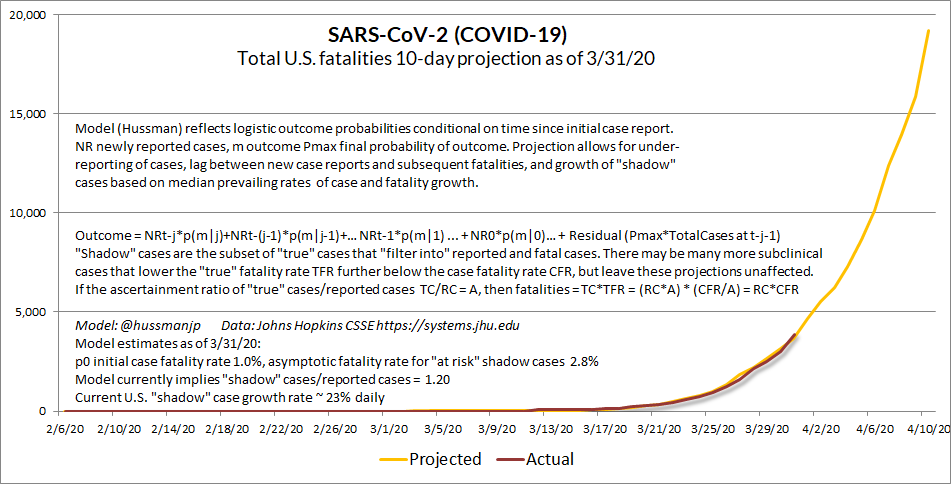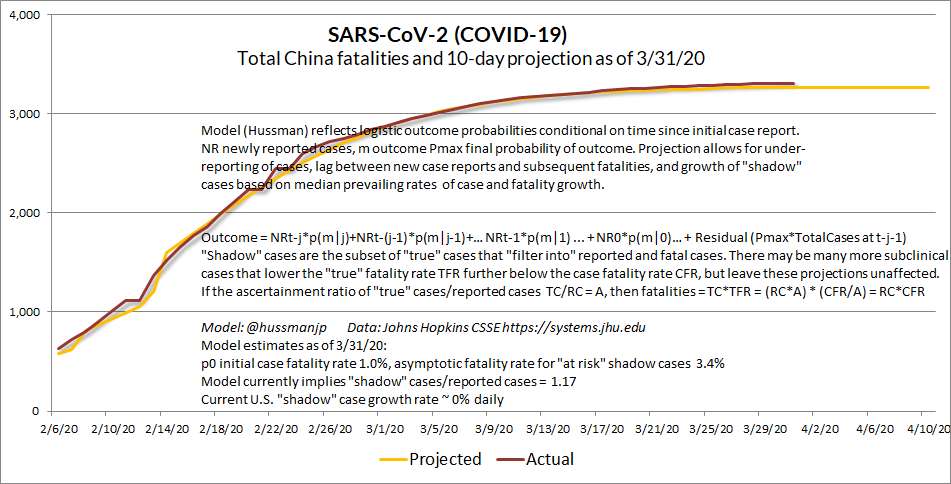THREAD: Pinning my prior #COVIDー19 threads and a 2/3/20 post here. Adding more posts below. If they& #39;re helpful PLEASE RETWEET.
Feb 2 thread: https://twitter.com/hussmanjp/status/1224040569476874244
March">https://twitter.com/hussmanjp... 8 thread: https://twitter.com/hussmanjp/status/1236792658099568643
We& #39;ve">https://twitter.com/hussmanjp... got about 3 weeks grace left for acute health system preparedness https://twitter.com/hussmanjp/status/1224336829635276801">https://twitter.com/hussmanjp...
Feb 2 thread: https://twitter.com/hussmanjp/status/1224040569476874244
March">https://twitter.com/hussmanjp... 8 thread: https://twitter.com/hussmanjp/status/1236792658099568643
We& #39;ve">https://twitter.com/hussmanjp... got about 3 weeks grace left for acute health system preparedness https://twitter.com/hussmanjp/status/1224336829635276801">https://twitter.com/hussmanjp...
This article by @Harry_Stevens at WaPo remains a MUST read. The graphics are brilliant. Social distancing beats lockdowns because with an R0 of ~2.6, stabilizing cases would need 1-1/2.6 = 62% of potential contacts to be contained. See my threads for more. https://www.washingtonpost.com/graphics/2020/world/corona-simulator/">https://www.washingtonpost.com/graphics/...
What we need now:
1) Mobilization of temporary hospital facilities: even at half the current case growth, we& #39;ll likely pass 1M #SARSCov2 cases (U.S.) by April, with over 100k admissions.
2) Rapid, mid-scale trials of repurposed therapeutics to address acute respiratory distress.
1) Mobilization of temporary hospital facilities: even at half the current case growth, we& #39;ll likely pass 1M #SARSCov2 cases (U.S.) by April, with over 100k admissions.
2) Rapid, mid-scale trials of repurposed therapeutics to address acute respiratory distress.
Primary need is data & rapid, controlled clinical trials of interventions that may be helpful against late-stage respiratory failure. Reposting my updated research observations on potential points of #SARSCoV2 pathway intervention. ACE2 and FcgR axes hit closest to home.
Average daily case growth in #SARSCoV2 ( #COVIDー19) is presently running about 18% for all cases outside of China, and 30% in the United States. "Flattening the curve" means bringing the exponential growth down. Even half the rate implies over 1 million U.S. cases during April.
Right now, at this moment, hiding in electronic medical records of thousands of #SARSCoV2 ( #COVIDー19) cases, is a wealth of urgent knowledge on potential protective effects of exposure w/ hundreds of existing pharmaceuticals.
Not a single paper yet reporting these odds ratios.
Not a single paper yet reporting these odds ratios.
Just read a study going around on an "effective cure" for #SARSCoV2 - just a handful of cases, several who were "excluded" b/c they were moved to the ICU.
I can& #39;t.
There& #39;s interesting work being done, but when you blast something to a confused public, read the damned paper.
I can& #39;t.
There& #39;s interesting work being done, but when you blast something to a confused public, read the damned paper.
I& #39;ve never been so distressed about a model working, but this will help gauge if the curve is flattening.
My initial attempt (see 3/11 post) was too conservative. This one models ascertainment and unreported "shadow" #SARSCoV2 cases. I& #39;ll explain below..
https://twitter.com/hussmanjp/status/1239394484187791362">https://twitter.com/hussmanjp...
My initial attempt (see 3/11 post) was too conservative. This one models ascertainment and unreported "shadow" #SARSCoV2 cases. I& #39;ll explain below..
https://twitter.com/hussmanjp/status/1239394484187791362">https://twitter.com/hussmanjp...
... See, the problem w/the oft-quoted "2% fatality rate" of #SARSCoV2 ( #Covid_19) is that fatalities/cases have been blowing higher, now running closer to 4.1%.
I don& #39;t think the CFR of 4.1% is "real" - but it reflects the need for a better model than fatalities/cases. (more..)
I don& #39;t think the CFR of 4.1% is "real" - but it reflects the need for a better model than fatalities/cases. (more..)
… Note how fatalities have diverged from 2% of reported cases. The best way to understand and model this process is to consider both the lag between new case reports and eventual fatalities, and also "shadow" cases that feed into reported ones (more...)
… with regard to time lags, as new #SARSCoV2 cases are reported, some are because they& #39;ve immediately come into the ICU as same-day fatalities, but others occur later. That process can be modeled well using logistic probabilities. Fatalities/cases are too simplistic (more …)
… So we can think of three groups of #SARSCoV2 cases:
1) "True" cases, many of which may be subclinical and can only be identified w/testing
2) "Shadow" cases, that run proportional to actual outcomes (reported cases, fatalities, recoveries)
3) Reported cases (more...)
1) "True" cases, many of which may be subclinical and can only be identified w/testing
2) "Shadow" cases, that run proportional to actual outcomes (reported cases, fatalities, recoveries)
3) Reported cases (more...)
… I think a reasonable way to model #SARSCoV2 trajectory is to observe that even though we can& #39;t know "true" cases, we can monitor the curve (and shifts) by allowing for unobserved "shadow" cases that feed into reports and fatalities, because A cancels out (read notes in chart).
… One more note this morning. While I do expect increased distancing to bring #COVIDー19 curve down, don& #39;t imagine it isn& #39;t necessary.
Case growth outside China is running ~18% sustained.
20k U.S. cases growing at 39% daily
Even at 15%
20k cases x (1.15)^30 days = 1.3mill
Case growth outside China is running ~18% sustained.
20k U.S. cases growing at 39% daily
Even at 15%
20k cases x (1.15)^30 days = 1.3mill
Great visualization showing how testing and containment can shift the epidemic from exponential to logistic curve (see previous threads).
My son Mike has been working in his apt in South Korea for two months. By 3/9/20 SK had run 200k tests. 1700 in U.S. https://www.nytimes.com/interactive/2020/03/21/upshot/coronavirus-deaths-by-country.html?action=click&module=Top%20Stories&pgtype=Homepage">https://www.nytimes.com/interacti...
My son Mike has been working in his apt in South Korea for two months. By 3/9/20 SK had run 200k tests. 1700 in U.S. https://www.nytimes.com/interactive/2020/03/21/upshot/coronavirus-deaths-by-country.html?action=click&module=Top%20Stories&pgtype=Homepage">https://www.nytimes.com/interacti...
This is what "flattening the curve" means. By early March, South Korea was running 3692 tests/million, the highest per-capita rate in the world. Sweden & Denmark began testing and limiting gatherings fairly quickly. We were a month late, but we can flatten this in the U.S. too.
In addition to cautiously enabling empiric use of off-label but not definitively established therapeutics for #SARSCoV2 ( #COVIDー19), NIH/NIAID pursuing RCTs on remdesivir, immune sera (IVIG), monoclonal antibodies, and other candidates.
Updating/sharing my research notes below.
Updating/sharing my research notes below.
My latest monthly commentary begins with an updated analysis and discussion of #SARSCoV2, including detail on why sustained containment efforts remain essential.
U.S. cases, and more important - fatalities - still increasing at a rate of 30% a day here. https://www.hussmanfunds.com/comment/mc200326/">https://www.hussmanfunds.com/comment/m...
U.S. cases, and more important - fatalities - still increasing at a rate of 30% a day here. https://www.hussmanfunds.com/comment/mc200326/">https://www.hussmanfunds.com/comment/m...
#SARSCoV2 isn& #39;t a "storm" passing overhead in a few weeks. Every new case in every new location is local "patient zero." The point of containment is to allow all existing cases to resolve w/minimal new transmission, while building capacity to identify, track & contain new cases.
Important to model the lags involved in #SARSCoV2 ( #COVID_19). The fact that fatalities lag initial case reports, coupled w/ incomplete ascertainment, is why case/fatality rate (CFR) is inexorably rising (4.8% ex-China and up to 1.7% US). Distressed this is my optimistic version.
1/3 Update 3/31/00 #SARSCoV2 ( #COVID19) 10-day projections. My bootstrap model captures lags w/logistic outcome probabilities, and allows for asymptomatic / subclinical cases, with a subset of "shadow" cases contributing to reported cases and fatalities.
First, global ex-China..
First, global ex-China..

 Read on Twitter
Read on Twitter